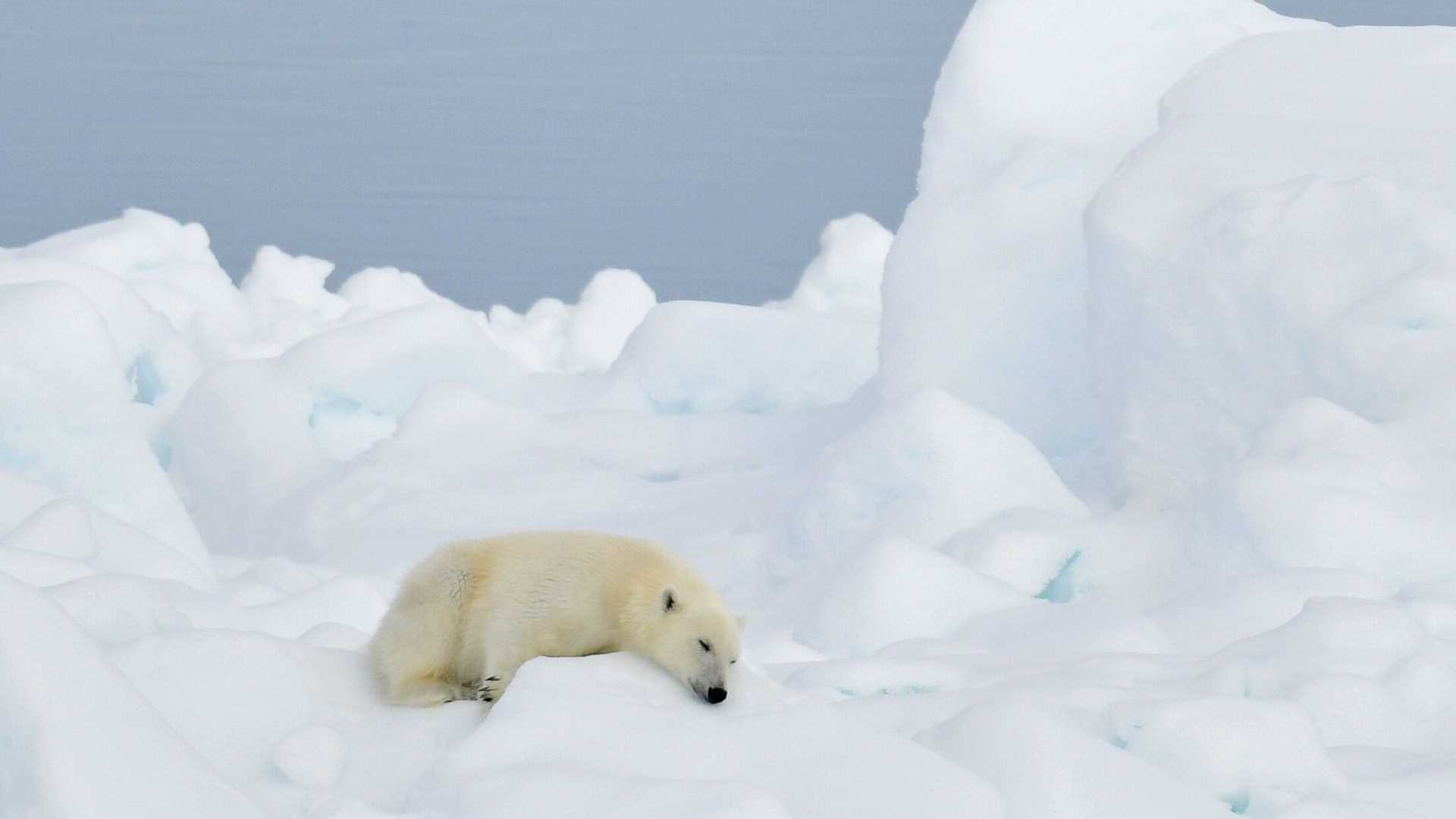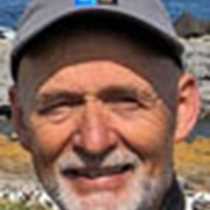As the wake-up call sounded, we found ourselves slightly above 79 degrees north and very close to the glacial front of Austfonna. This ice cap covers most of Nordaustlandet Island and is the third largest ice cap in the world, surpassed only by Antarctica and Greenland. As Expedition Leader Stefano Pozzi wished us a good morning, he also announced that a polar bear had just been spotted, peacefully sleeping on a big ice floe just off the ice cap. Binoculars, cameras, and an arsenal of long lenses rapidly found their way to the ship’s observation platforms. Many excited faces were seen as the ship slowly moved on with an absolute minimum of noise. After a delayed breakfast, we cruised along the seemingly endless edge of the mighty ice cap. As we sailed along, the captain carefully maneuvered the ship a bit closer to offer a look at an impressive waterfall of meltwater from the top of the ice edge.
After watching the relaxed bear this morning, what could be more pertinent than naturalist Jackie Weston’s captivating presentation on polar bears, the king and top predator of the High Arctic. Just as Jackie’s presentation came to an end, another polar bear was announced from the bridge. We all went on deck to get a good look at the furry creature. About an hour later, two more polar bears were spotted–a female with a yearling, a one-and-a-half year old cub. And it did not stop there!
A good hour after lunch, we spotted no less than FOUR bears at the same time: two females with one cub each! The “two by two” bears literally crossed each other’s paths, seemingly without interest in each other.
The weather stayed mostly sunny and perfectly calm throughout the day, and it was an awesome experience to watch so many bears and other wildlife in this amazing icescape. We enjoyed the sight of several seabirds feeding in the water or flying around the ship throughout the day. We sighted a couple ivory gulls, a special treat for birders.
In the afternoon, National Geographic photographer Esther Horvath gave a fascinating presentation about her participation in the MOSAIC Expedition, a yearlong climate research study aboard the German ship Polarstern. In many ways, this expedition resembled Fridtjof Nansen’s expedition with the Fram in 1893-96, when the ship was frozen into sea ice in the Arctic Ocean, and sailors had the hope of drifting over or very close to the North Pole. Esther was onboard three and a half months during the polar winter night. She talked vividly about the challenges that she and her shipmates faced, particularly having to deal with complete darkness and extreme cold. Her story was complemented by her own incredible photography.
Just before the end of dinner, another two polar bears were reported from the bridge team. The excited chatter of voices and laughter before recap offered proof of an expedition day to remember.







